The Planning Cycle
-
Observing/Collecting Information: Gathering meaningful information about children's current knowledge, identity, culture, and what they are investigating and exploring.
-
Analysing Learning: Interpreting the collected information to understand children's learning and development.
-
Documenting: Recording and evidencing children's learning and progress.
-
Planning: Setting goals and planning further learning experiences based on the analysis and documentation.
-
Implementing: Putting the planned learning experiences into action.
-
Reflecting/Evaluating: Reflecting on the implemented activities and evaluating their effectiveness to inform future planning.
This cycle ensures that documentation is not just a bureaucratic task but a meaningful process that supports children's learning and development.
Practical Examples For Observing/Collecting Information
Here are some practical examples for observing and collecting information as part of the Planning Cycle in early childhood education:
Observing and Collecting Information
-
Anecdotal Records:
-
Example: During free play, you notice a child building a tall tower with blocks and narrating a story about a castle. You document this observation, noting the child's language skills, creativity, and fine motor skills.
-
-
Learning Stories:
-
Example: You observe a group of children working together to create a mural. You write a narrative that captures their collaboration, communication, and problem-solving skills, including quotes from the children.
-
-
Photographs and Videos:
-
Example: Capture photos of a child exploring a sensory table filled with sand and water. Document their actions, facial expressions, and interactions with materials and peers.
-
-
Jottings:
-
Example: Quickly jot down notes during circle time when a child shares their thoughts about a book you are reading. Note their comprehension, engagement, and verbal skills.
-
-
Checklists and Rating Scales:
-
Example: Use a checklist to document a child's progress in specific areas, such as social skills or self-help abilities. Regularly update this checklist to track development over time.
-
-
Work Samples:
-
Example: Collect and date children's artwork, writing samples, or other creations. Include comments about the child's process, choices, and skills demonstrated.
-
-
Portfolios:
-
Example: Create a portfolio for each child that includes various types of documentation (photos, work samples, learning stories) to provide a comprehensive view of their development.
-
-
Parent and Caregiver Input:
-
Example: Regularly communicate with parents and caregivers to gather insights about the child's interests, behaviors, and experiences at home. Include this information in your documentation.
-
-
Child Conversations and Interviews:
-
Example: Engage in one-on-one conversations with children to understand their thoughts, feelings, and ideas. Document these conversations to capture the child's perspective and voice.
-
-
Running Records:
-
Example: Conduct a detailed, continuous observation of a child's behavior during a specific activity, such as a puzzle-solving session. Document each step the child takes and their problem-solving approach.
-
Practical Examples Of Analysing Learning
Here are some practical examples of analyzing learning as part of the Planning Cycle in early childhood education:
-
Anecdotal Records Analysis:
-
Observation: You note that a child consistently chooses to play with puzzles during free play.
-
Analysis: Recognize that the child enjoys problem-solving and has developed fine motor skills. Plan to introduce more complex puzzles and other problem-solving activities.
-
-
Learning Stories Analysis:
-
Observation: You document a learning story where a child shows interest in insects during outdoor play.
-
Analysis: Identify the child’s interest in nature and science. Plan activities that explore insects, such as a bug hunt or creating a bug habitat.
-
-
Photographs and Videos Analysis:
-
Observation: You capture photos of a child constructing a tall tower with blocks.
-
Analysis: Notice the child’s spatial awareness, creativity, and persistence. Plan to introduce building challenges and discuss concepts like balance and symmetry.
-
-
Jottings Analysis:
-
Observation: Quick notes reveal a child asking many questions during storytime.
-
Analysis: Understand the child’s curiosity and strong verbal skills. Plan to include more interactive and question-driven reading sessions.
-
-
Checklists and Rating Scales Analysis:
-
Observation: A checklist shows a child has mastered basic self-help skills.
-
Analysis: Acknowledge the child’s independence. Plan to introduce more responsibilities and activities that build on these skills.
-
-
Work Samples Analysis:
-
Observation: Collecting and reviewing a child’s artwork shows a progression in their drawing skills.
-
Analysis: Notice the improvement in fine motor skills and creativity. Plan to provide more art materials and encourage expressive projects.
-
-
Portfolios Analysis:
-
Observation: A portfolio containing various types of documentation (photos, work samples, learning stories) provides a comprehensive view of a child’s development.
-
Analysis: Track progress over time and identify patterns in the child’s learning. Plan to address areas that need support and extend areas of strength.
-
-
Parent and Caregiver Input Analysis:
-
Observation: Parents share that their child loves playing with musical instruments at home.
-
Analysis: Incorporate more music-related activities in the classroom to support the child’s interests and development.
-
-
Child Conversations and Interviews Analysis:
-
Observation: During a one-on-one conversation, a child expresses interest in dinosaurs.
-
Analysis: Plan activities that explore dinosaurs, such as reading dinosaur books, creating dinosaur crafts, and setting up a dinosaur-themed play area.
-
-
Running Records Analysis:
-
Observation: A detailed, continuous observation of a child solving a puzzle shows their problem-solving strategies.
-
Analysis: Identify the child’s critical thinking and perseverance. Plan to introduce more challenging puzzles and games that require similar skills.
-
By analyzing these observations, educators can gain insights into each child's learning and development, allowing them to tailor their planning and support to meet individual needs and interests effectively.
Practical Examples of Documenting - Recording and Evidencing Learning
-
Learning Journals/Portfolios:
-
Example: Create individual learning journals for each child. Include a mix of photos, artwork, writing samples, and teacher observations. Add notes about the child's progress, milestones, and next steps in their learning journey.
-
-
Learning Stories:
-
Example: Document a child's learning experience through a narrative that captures the context, the child's actions, and the learning outcomes. For example, write a story about how a child used different materials to create a structure, highlighting their problem-solving skills and creativity.
-
-
Photographic Evidence:
-
Example: Take photos of children engaging in various activities. Annotate the photos with descriptions of what the child is doing, the skills they are using, and the learning that is taking place. This visual documentation can be displayed in the classroom or included in the child's portfolio.
-
-
Anecdotal Records:
-
Example: Write brief, factual accounts of specific incidents that illustrate a child's learning and development. For instance, document how a child successfully completed a puzzle, noting their persistence and problem-solving strategies.
-
-
Checklists and Rating Scales:
-
Example: Use checklists to track the development of specific skills, such as social interactions, fine motor skills, or language development. Regularly update the checklists to monitor progress over time.
-
-
Work Samples:
-
Example: Collect examples of children's work, such as drawings, paintings, or written pieces. Add annotations that explain what the child was attempting to do, what they learned, and how it relates to their development.
-
-
Videos and Audio Recordings:
-
Example: Record videos or audio clips of children during activities or interactions. Review the recordings to identify learning moments, and discuss them with the child to reflect on their experiences and progress.
-
-
Child Interviews:
-
Example: Conduct brief interviews with children to capture their thoughts, feelings, and reflections on their learning experiences. Transcribe the interviews and include them in the child's portfolio as evidence of their self-awareness and communication skills.
-
-
Parent Input:
-
Example: Invite parents to share observations and insights about their child's learning and development at home. Incorporate these contributions into the child's documentation to provide a more comprehensive picture of their progress.
-
-
Group Learning Displays:
-
Example: Create displays that showcase group projects or collaborative activities. Include photos, children's quotes, and teacher observations to highlight the learning that occurred and the contributions of each child.
-
Practical Examples Of Planning
Individualized Learning Plans:
-
-
Example: After observing that a child has a keen interest in dinosaurs, you plan activities that cater to this interest. This could include reading dinosaur-themed books, organizing a dinosaur hunt in the sandbox, and creating dinosaur crafts. Your plan includes specific goals like enhancing the child's vocabulary and fostering creativity.
-
-
Group Activities:
-
Example: Based on observations that several children enjoy building with blocks, you plan a group project where children work together to construct a model city. Your plan includes steps for guiding collaboration, problem-solving, and incorporating math skills by measuring and counting blocks.
-
-
Thematic Units:
-
Example: You plan a thematic unit on "Seasons." Activities include reading books about the four seasons, art projects like painting seasonal trees, and science experiments like observing how leaves change color. Your plan outlines objectives such as understanding weather patterns and learning new vocabulary.
-
-
Daily Schedules:
-
Example: To ensure a balanced day, you plan a daily schedule that includes a mix of structured activities (circle time, storytime) and free play. Your plan ensures children have opportunities for physical activity, creative expression, and quiet time.
-
-
Special Events:
-
Example: You plan a "Cultural Celebration Day" where children and their families are invited to share their cultural traditions. The plan includes activities like tasting different foods, traditional music and dance, and storytelling sessions. Objectives include promoting cultural awareness and fostering a sense of community.
-
-
Learning Centers:
-
Example: Observing that children enjoy role-playing, you plan to set up a "Grocery Store" learning center. Your plan includes stocking the center with play food, cash registers, and shopping bags. Objectives include developing social skills, practicing counting, and enhancing language development.
-
-
Outdoor Learning:
-
Example: You notice that children are curious about insects during outdoor play. You plan an "Insect Exploration" activity where children use magnifying glasses to observe bugs, draw their findings, and learn about different insects' roles in the environment. Objectives include fostering scientific inquiry and observation skills.
-
-
Art and Creativity:
-
Example: You plan an art project where children create self-portraits using various materials. Your plan includes steps for discussing facial features, exploring different art supplies, and encouraging self-expression. Objectives include enhancing fine motor skills and fostering self-awareness.
-
-
Sensory Activities:
-
Example: You plan a sensory bin activity with materials like rice, beans, and small toys for children to explore textures and practice fine motor skills. Your plan includes rotating the materials regularly to keep the activity engaging. Objectives include sensory exploration and developing hand-eye coordination.
-
-
Field Trips:
-
Example: You plan a field trip to a local farm. The plan includes activities like feeding animals, observing crops, and discussing where food comes from. Objectives include experiential learning and understanding the farm-to-table process.
-
Practcal Examples Of Implementing
-
Dinosaur Exploration Activity:
-
Plan: Based on a child's interest in dinosaurs.
-
Implementation: Set up a "Dinosaur Discovery" station with dinosaur figurines, books, and a sandbox for excavation. Guide children in identifying different types of dinosaurs, discuss their features, and create a mini-diorama. Encourage children to share their dinosaur knowledge with peers.
-
-
Building a Model City Group Project:
-
Plan: Based on observations of children enjoying building with blocks.
-
Implementation: Provide various building materials, including blocks, recycled materials, and craft supplies. Facilitate group discussions about city planning and assign roles (e.g., architects, builders). Support children in working together to construct buildings, roads, and parks. Display the completed model city and invite children to give a guided tour.
-
-
Seasons Thematic Unit:
-
Plan: Explore the concept of seasons.
-
Implementation: Organize daily activities related to each season. For example, create autumn leaf collages, plant spring flowers, have a summer water play day, and conduct a winter snowflake craft. Incorporate stories, songs, and discussions about seasonal changes and weather patterns.
-
-
Daily Schedule with Balance:
-
Plan: Ensure a balanced daily schedule.
-
Implementation: Follow a schedule that includes structured activities (circle time, storytime), free play, outdoor time, and quiet time. Observe and adjust the schedule based on children's needs and energy levels throughout the day. Encourage children to participate in transitions and routines.
-
-
Cultural Celebration Day:
-
Plan: Celebrate cultural diversity.
-
Implementation: Invite families to share their cultural traditions, foods, and stories. Set up cultural stations with activities like trying on traditional clothing, tasting different foods, and listening to cultural music. Facilitate discussions about the importance of diversity and inclusion.
-
-
Grocery Store Learning Center:
-
Plan: Create a role-playing center based on children's interest in role-playing.
-
Implementation: Set up a grocery store with play food, cash registers, shopping bags, and price tags. Encourage children to take on roles like customers, cashiers, and store managers. Guide them in practicing counting, money handling, and social interactions.
-
-
Insect Exploration Outdoor Activity:
-
Plan: Based on children's curiosity about insects.
-
Implementation: Provide magnifying glasses and bug containers. Take children on a bug hunt in the garden or playground. Discuss the different types of insects they find and their habitats. Encourage children to draw and label their findings in a nature journal.
-
-
Self-Portrait Art Project:
-
Plan: Foster creativity and self-awareness.
-
Implementation: Provide mirrors, various art supplies (markers, paints, collage materials), and paper. Guide children in creating self-portraits by observing their reflections. Discuss facial features and expressions. Display the self-portraits in the classroom and encourage children to share their artwork with peers.
-
-
Sensory Bin Activity:
-
Plan: Promote sensory exploration.
-
Implementation: Fill a sensory bin with materials like rice, beans, water beads, or sand. Include tools like scoops, cups, and small toys. Allow children to explore the textures, practice pouring and measuring, and engage in imaginative play. Rotate the materials regularly to keep the activity fresh and engaging.
-
-
Farm Field Trip:
-
Plan: Provide experiential learning about farms.
-
Implementation: Organize a field trip to a local farm. Plan activities like feeding animals, observing crops, and discussing where food comes from. Prepare children with farm-related stories and discussions beforehand. Reflect on the experience afterward by creating a class book about the trip.
-
Practical Examples Of Reflecting/Evaluating
Reflecting and evaluating are crucial steps in the planning cycle as they help educators assess the effectiveness of their activities and make informed decisions for future planning. Here are some practical examples of reflecting and evaluating:
-
Reflective Journals:
-
Example: After a week of activities focused on “Seasons,” the educator writes in a reflective journal about what worked well and what could be improved. They note that the children were highly engaged during the outdoor leaf collection but less interested in the storytime about winter. This reflection helps in planning more outdoor activities and rethinking the approach to indoor storytime.
-
-
Team Meetings:
-
Example: During a weekly team meeting, educators discuss their observations and share insights from the past week's activities. They collectively evaluate the effectiveness of the activities and decide on any adjustments needed. For instance, they may decide to introduce more hands-on activities based on the children's responses.
-
-
Feedback from Children:
-
Example: After a “Dinosaur Exploration” activity, the educator asks the children what they enjoyed the most and if there was anything they didn’t like. The children express excitement about the sandbox excavation but suggest they want more dinosaur stories. The educator uses this feedback to plan more story sessions.
-
-
Parent Feedback:
-
Example: An educator sends home a brief survey for parents asking about their child's experience with recent activities. Parents respond that their children have been talking a lot about the insect exploration and showing a keen interest in bugs at home. This feedback reinforces the success of the activity and encourages the educator to continue with similar explorations.
-
-
Observation Notes:
-
Example: During a block-building activity, the educator takes notes on children’s interactions, challenges faced, and the strategies they used. Reflecting on these notes later, the educator realizes that children need more opportunities to practice teamwork and communication skills. This leads to planning more collaborative activities.
-
-
Learning Stories Analysis:
-
Example: The educator reviews learning stories created over the past month. They reflect on the skills children have developed and areas needing further support. For instance, they notice significant improvement in language skills and plan to introduce more vocabulary-rich activities.
-
-
Evaluation Forms:
-
Example: After a field trip to a local farm, the educator fills out an evaluation form detailing what went well and what challenges arose. They note that children were very curious but got tired towards the end of the trip. This reflection helps in planning shorter, more focused trips in the future.
-
-
Self-Assessment:
-
Example: Educators use self-assessment tools to reflect on their own practices and professional development. They assess their ability to engage children, manage activities, and adapt plans based on children's needs. This self-evaluation informs their professional growth goals.
-
-
Child Progress Reviews:
-
Example: Educators regularly review children's portfolios to assess their progress. They reflect on the child's growth, interests, and areas needing support. This ongoing evaluation helps in tailoring future activities to each child’s developmental needs.
-
-
Reflective Discussions with Children:
-
Example: After a creative art project, the educator sits with the children and discusses what they created, what they learned, and how they felt about the activity. This reflection helps children develop self-awareness and provides the educator with insights into the activity’s impact.
-
By incorporating these reflective and evaluative practices, educators can continuously improve their planning and provide more effective and meaningful learning experiences for children.
Further Reading
The Planning Cycle To Document Children's Learning
5 Stages Of The EYLF Planning Cycle
The Cycle of Planning
How To Achieve Quality Area 1
Critical Reflection Questions For NQS QA1
Reflection Questions For Quality Area 1
Exceeding Guidance For Quality Area 1




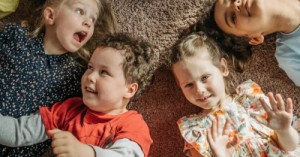
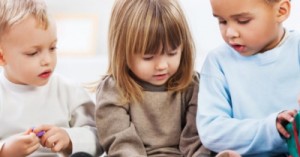

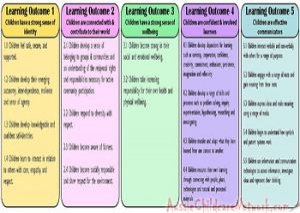 Here is the list of the EYLF Learning Outcomes that you can use as a guide or reference for your documentation and planning. The EYLF
Here is the list of the EYLF Learning Outcomes that you can use as a guide or reference for your documentation and planning. The EYLF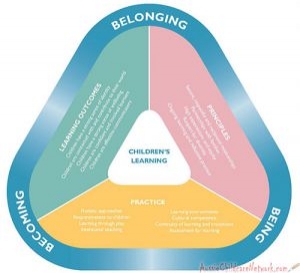 The EYLF is a guide which consists of Principles, Practices and 5 main Learning Outcomes along with each of their sub outcomes, based on identity,
The EYLF is a guide which consists of Principles, Practices and 5 main Learning Outcomes along with each of their sub outcomes, based on identity, This is a guide on How to Write a Learning Story. It provides information on What Is A Learning Story, Writing A Learning Story, Sample
This is a guide on How to Write a Learning Story. It provides information on What Is A Learning Story, Writing A Learning Story, Sample One of the most important types of documentation methods that educators needs to be familiar with are “observations”. Observations are crucial for all early childhood
One of the most important types of documentation methods that educators needs to be familiar with are “observations”. Observations are crucial for all early childhood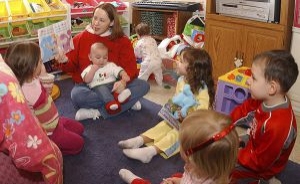 To support children achieve learning outcomes from the EYLF Framework, the following list gives educators examples of how to promote children's learning in each individual
To support children achieve learning outcomes from the EYLF Framework, the following list gives educators examples of how to promote children's learning in each individual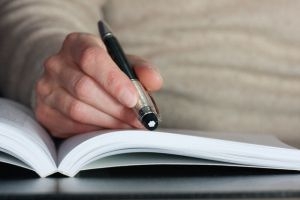 Reflective practice is learning from everyday situations and issues and concerns that arise which form part of our daily routine while working in an early
Reflective practice is learning from everyday situations and issues and concerns that arise which form part of our daily routine while working in an early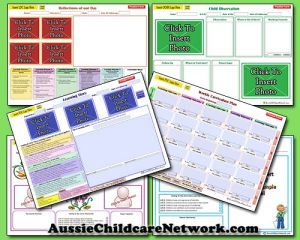 Within Australia, Programming and Planning is reflected and supported by the Early Years Learning Framework. Educators within early childhood settings, use the EYLF to guide
Within Australia, Programming and Planning is reflected and supported by the Early Years Learning Framework. Educators within early childhood settings, use the EYLF to guide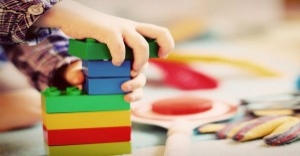 When observing children, it's important that we use a range of different observation methods from running records, learning stories to photographs and work samples. Using
When observing children, it's important that we use a range of different observation methods from running records, learning stories to photographs and work samples. Using This is a guide for educators on what to observe under each sub learning outcome from the EYLF Framework, when a child is engaged in
This is a guide for educators on what to observe under each sub learning outcome from the EYLF Framework, when a child is engaged in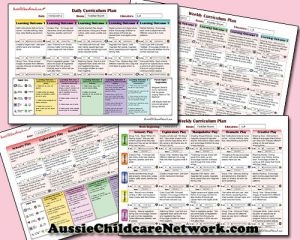 The Early Years Learning Framework describes the curriculum as “all the interactions, experiences, activities, routines and events, planned and unplanned, that occur in an environment
The Early Years Learning Framework describes the curriculum as “all the interactions, experiences, activities, routines and events, planned and unplanned, that occur in an environment


